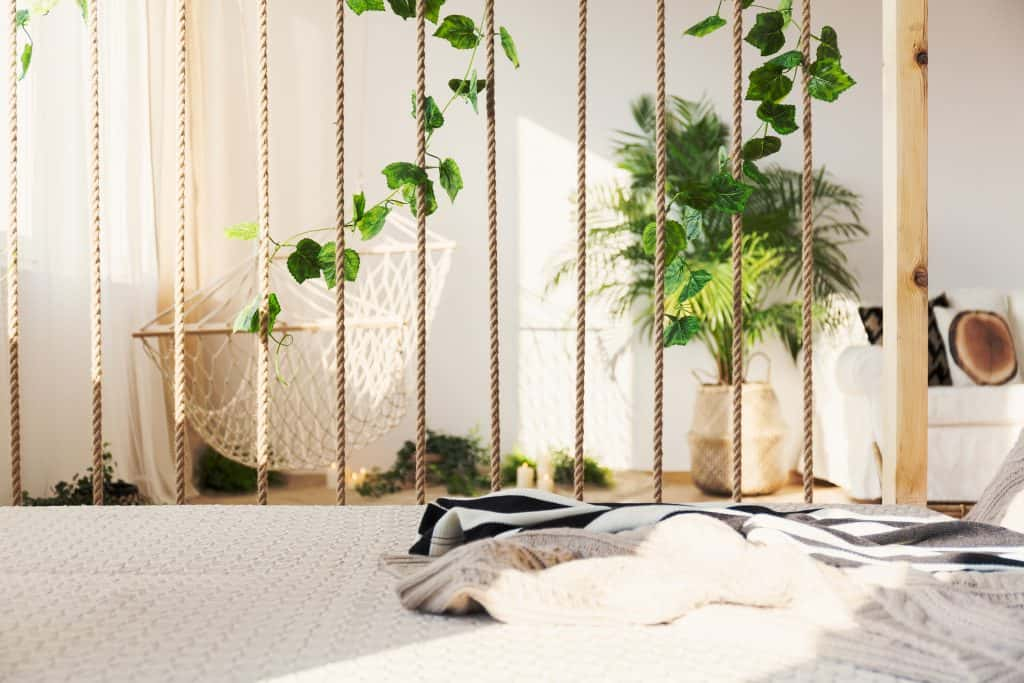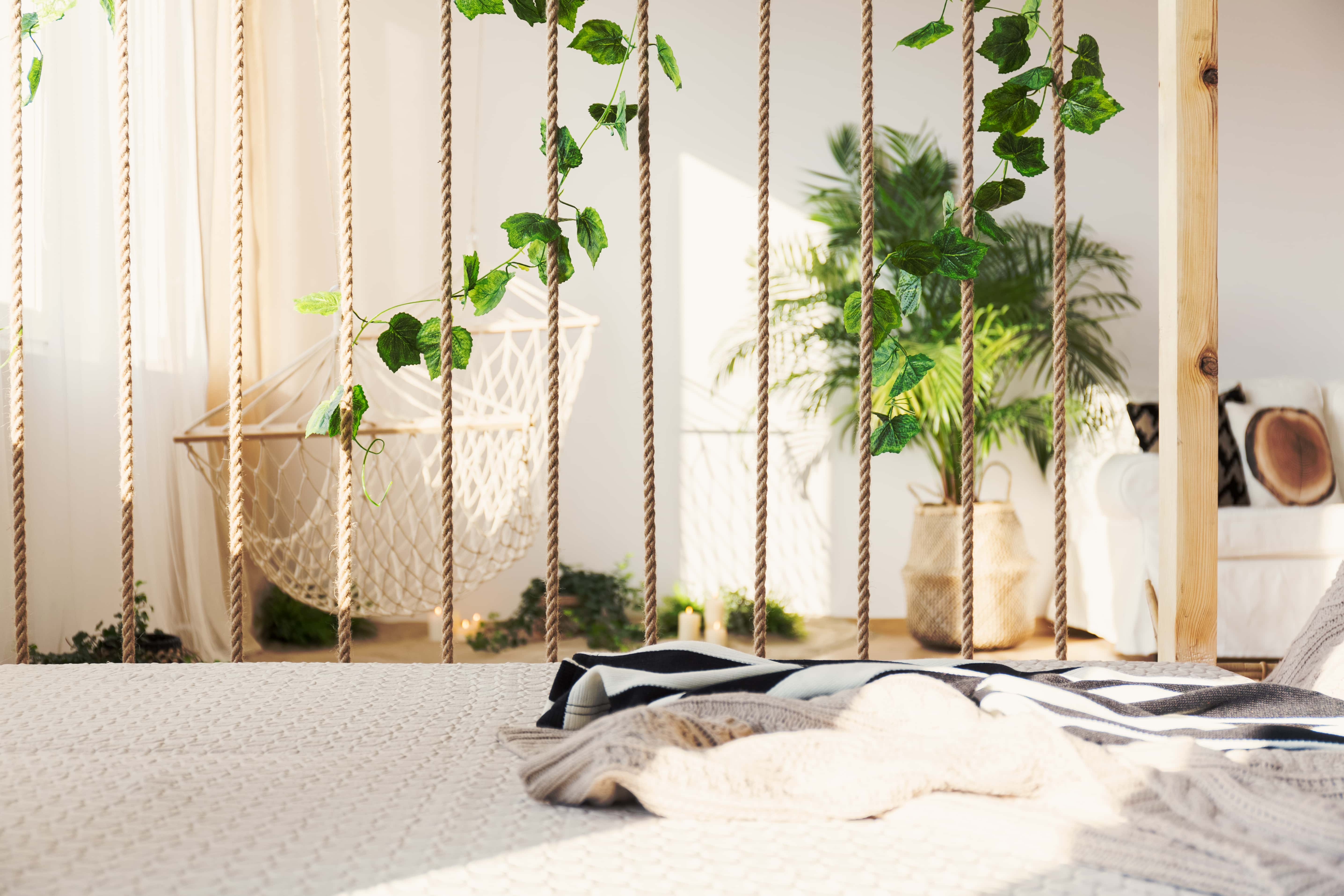Open plan living is a popular choice in many homes today, and with good reason too! This style of living advocates a flexible lifestyle, creating a more spacious feel and allows free flow of light and air through your home. If you’re someone who loves to entertain, an open plan home is ideal for your lifestyle. Your guests can hang around in the kitchen as you get dinner ready, and they can mingle freely in the connected spaces. This style of planning also works beautifully well with a minimalistic interior theme and contemporary furniture.
While all these are undoubted benefits, it can be challenging to clearly demarcate spaces in an open plan home. How can you create separate areas for the living, family and dining, even while allowing the spaces to flow into each other? What do you do if you need to squeeze in an extra seating nook while ensuring the space does not feel cramped? How do you decide what furniture goes where?
Here Are Some Tips From Our Interior Designers!
Zone By Function
Typically, open-plan homes have a shared living, dining, family and kitchen area. In some smaller homes, the bedroom is also a part of the shared space. Even though there are no walls or doors in between, it’s very easy to demarcate these areas by function.
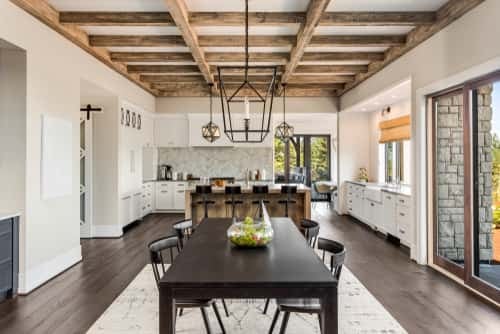
Create A Breakfast Counter
Let’s start with the kitchen. A breakfast counter is a great way to define the boundaries of your kitchen. In smaller homes, you can even do away with the dining table altogether and have your meals right at the counter!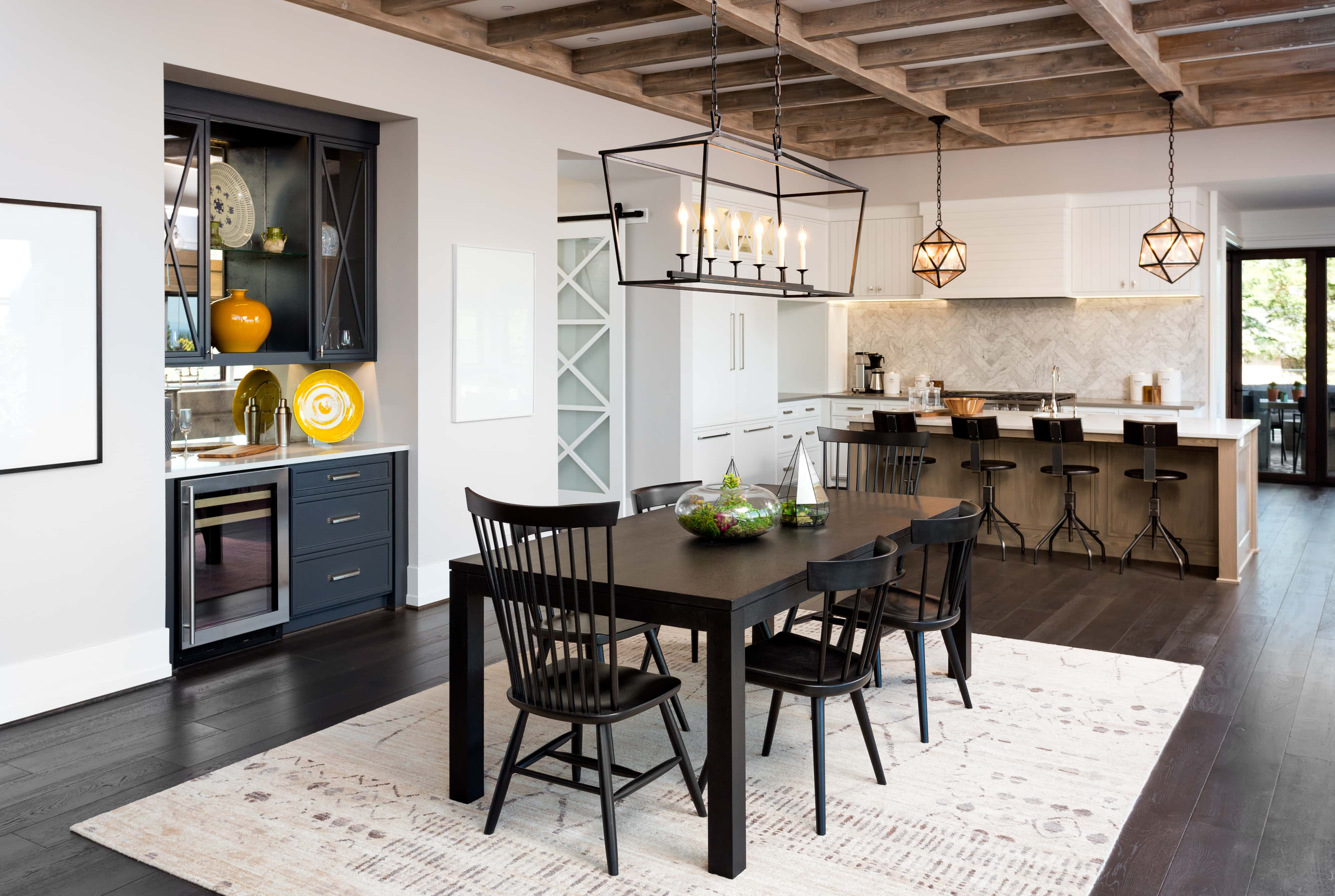
Use Sliding Shutters For Privacy
If your bedroom is a part of your open plan area, sliding folding shutters that are opaque, or pretty tie-back curtains are a good idea to create privacy when needed. You can always keep them open during the day, and shut them at night to create a cosy, personal space.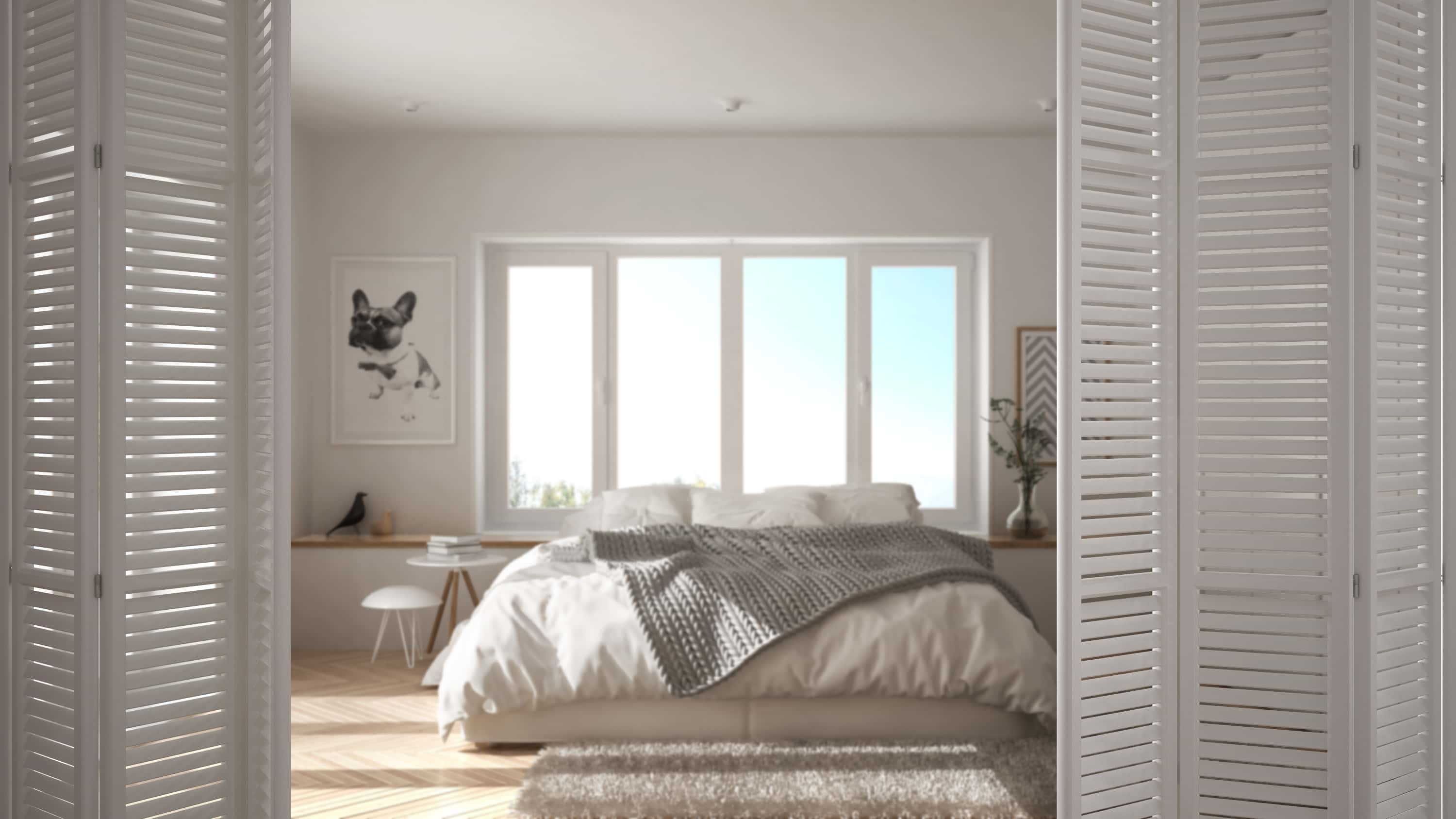
Make Use Of The Mezzanine
In the studio loft below, the bedroom is tucked away on the mezzanine level and there is a free open flow of spaces, both on a horizontal as well as a vertical level.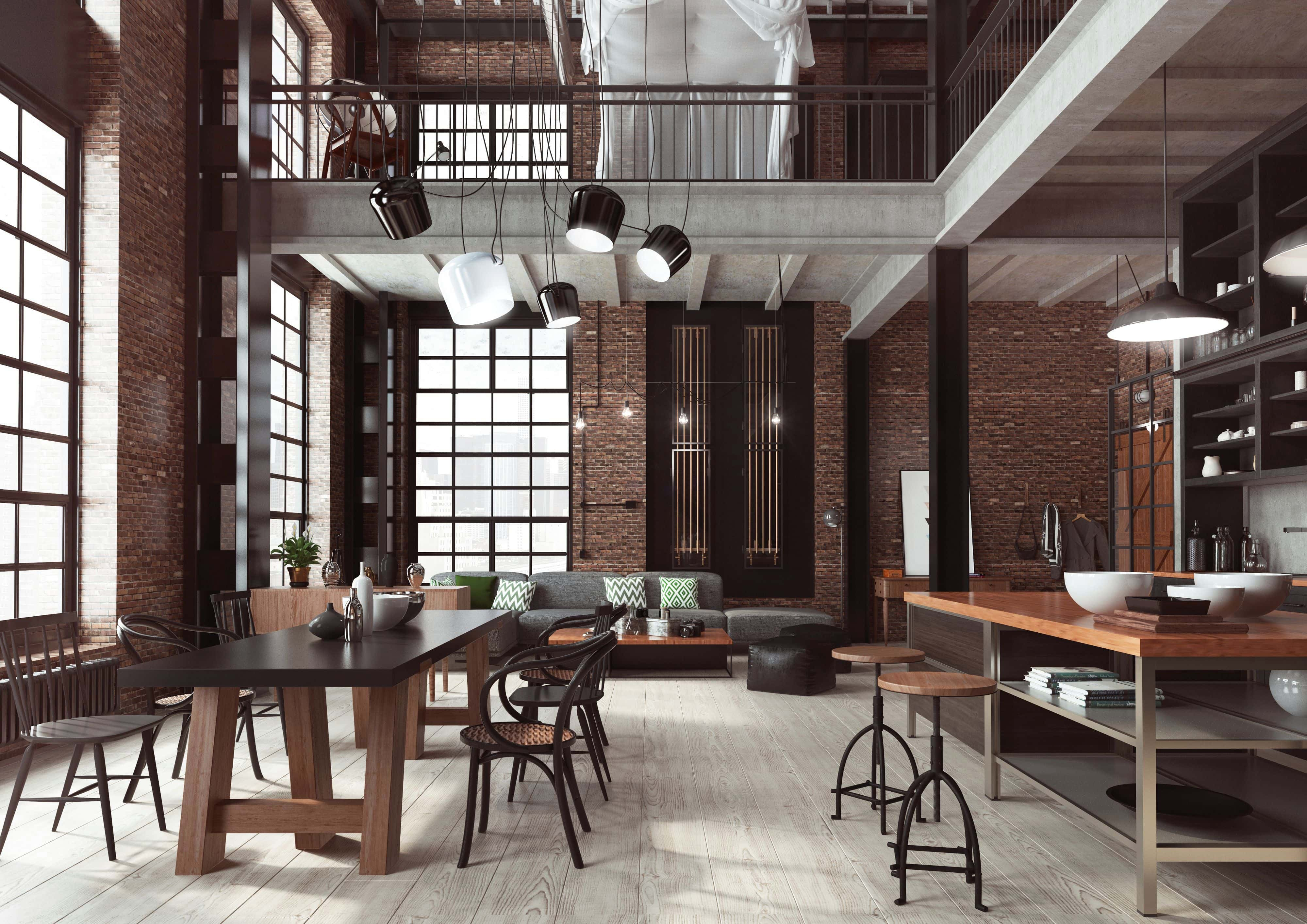
L-shaped Open Plan Arrangements
Many living cum dining areas are laid out in an L-shape, in which case you can quite easily demarcate the seating area separately. Put the furniture along the sides of the walls, and add a backless sofa or divan in between so that you do not visually cut into the openness of the space.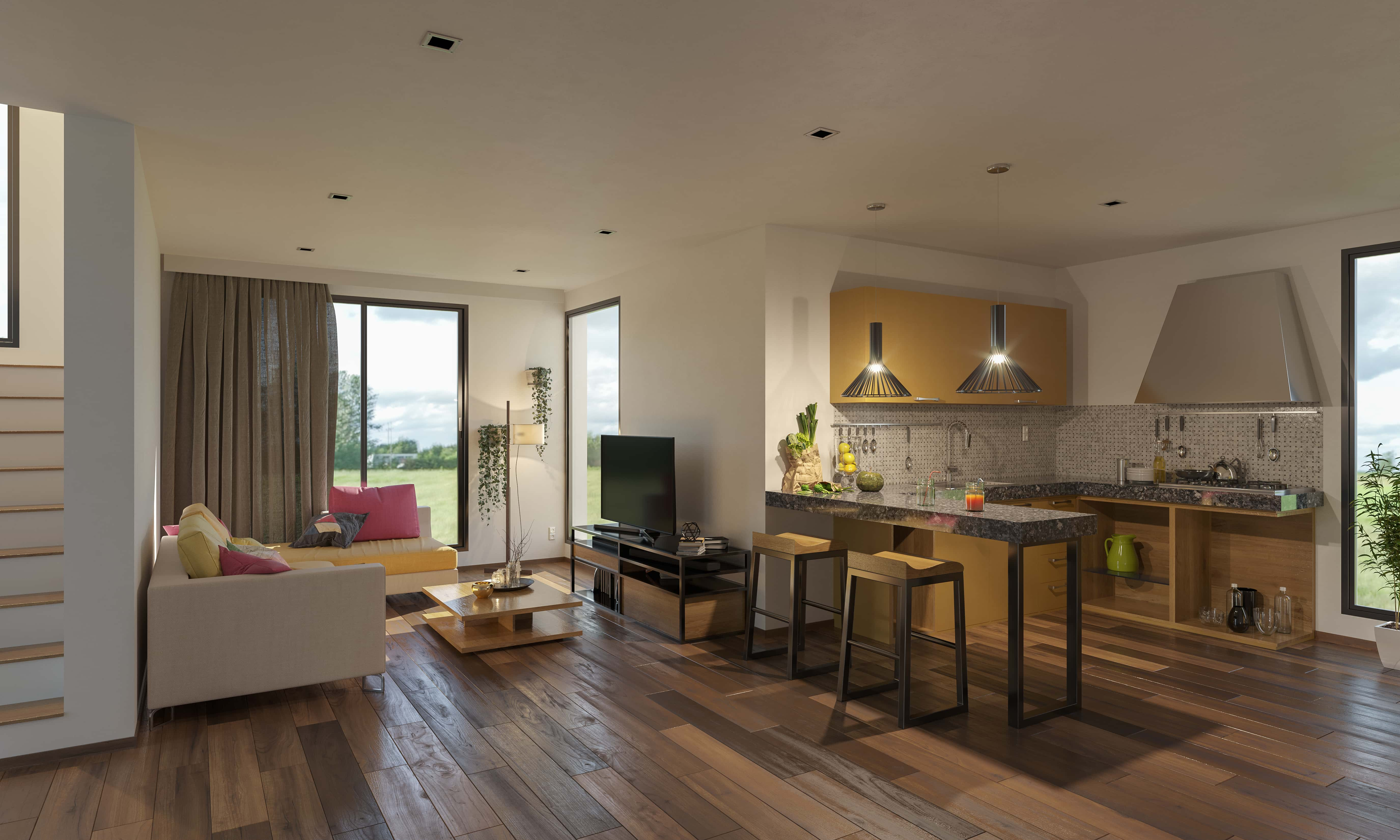
Delineate Seating Areas With A Carpet
A large carpet or rug that that sits under the front legs of your sofas creates a cosy area, anchoring the seating area together and infusing it with warmth. Rugs add colour and texture and help to create focus and cohesion in an open plan area.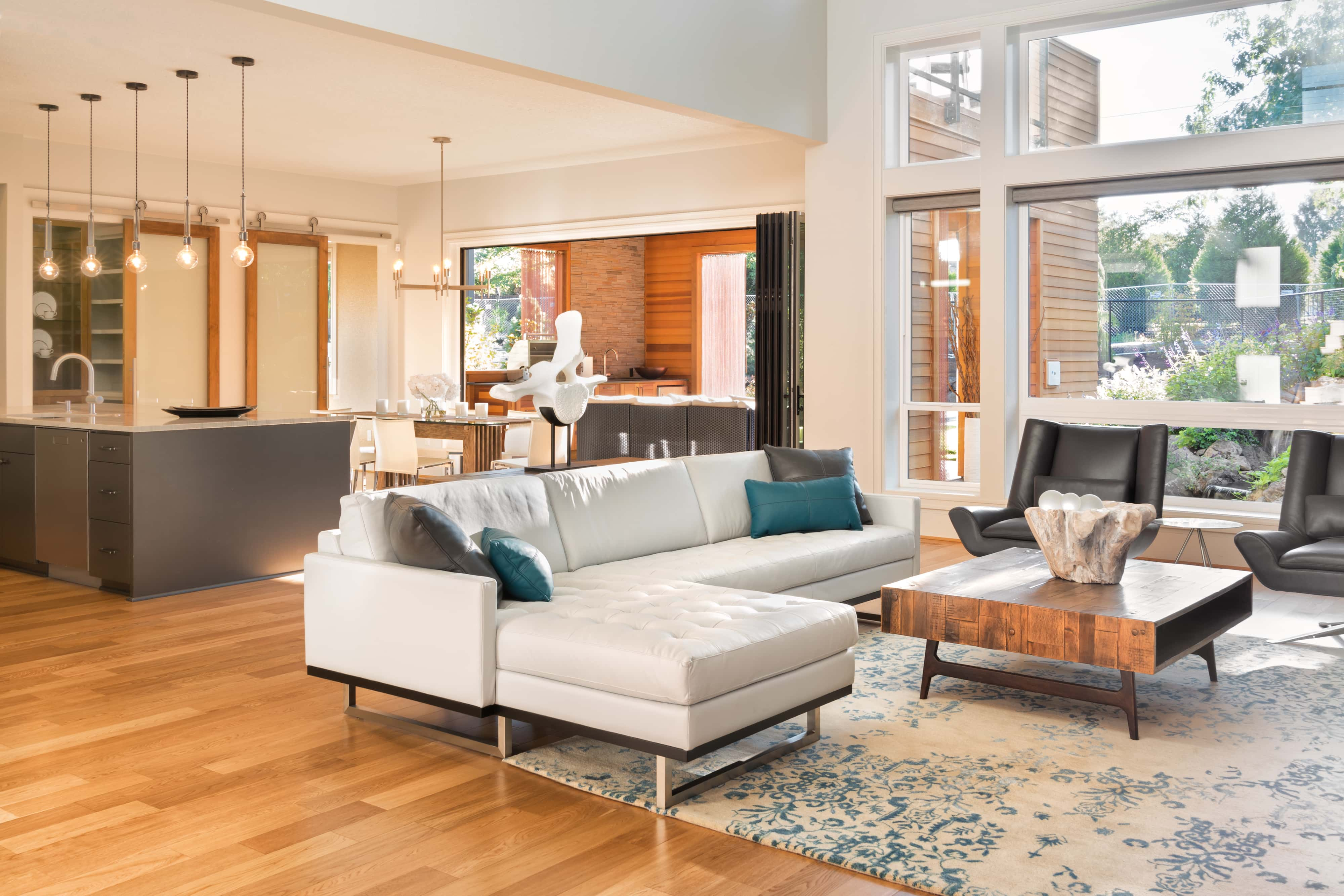
Create An Illusion Of Privacy With A Room Divider
Without actually cutting into the spacious feel of your open plan home, a room divider can be used to cleverly demarcate spaces. Folding screens or pretty curtains can act as transformative room dividers that add texture, colour and utility to your room. You can also use a divider made of wooden slats to section off the space into two areas, while still allowing airflow and not compromising the open effect.
The image below shows a great open plan décor idea. We love the way a wooden frame and ropes have been used to demarcate spaces and create a semblance of privacy for the bed!
Create A Reading Nook
Do you have a small corner that’s leftover after you have taken care of your main functional areas? Why not create a lovely little reading nook here! A corner bookshelf, a comfortable chair and a reading lamp are all you need to create a charming nook that could soon become your favourite corner of the house!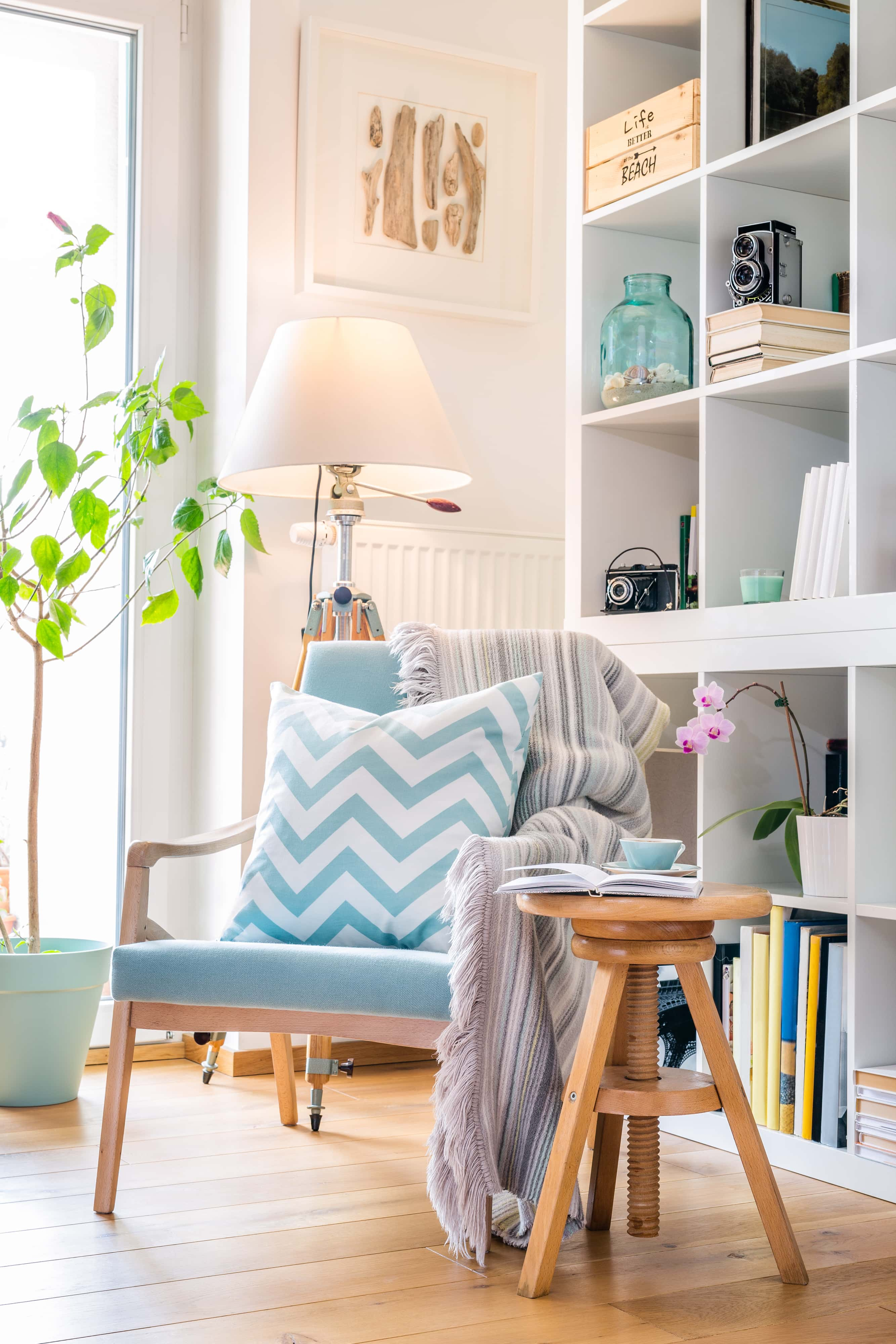
Open Bookcase
An open-plan bookcase that can be accessed from either side can be a marker between the living and dining zones. In the image below, the large plant on the opposite wall also subtly delineates the spaces.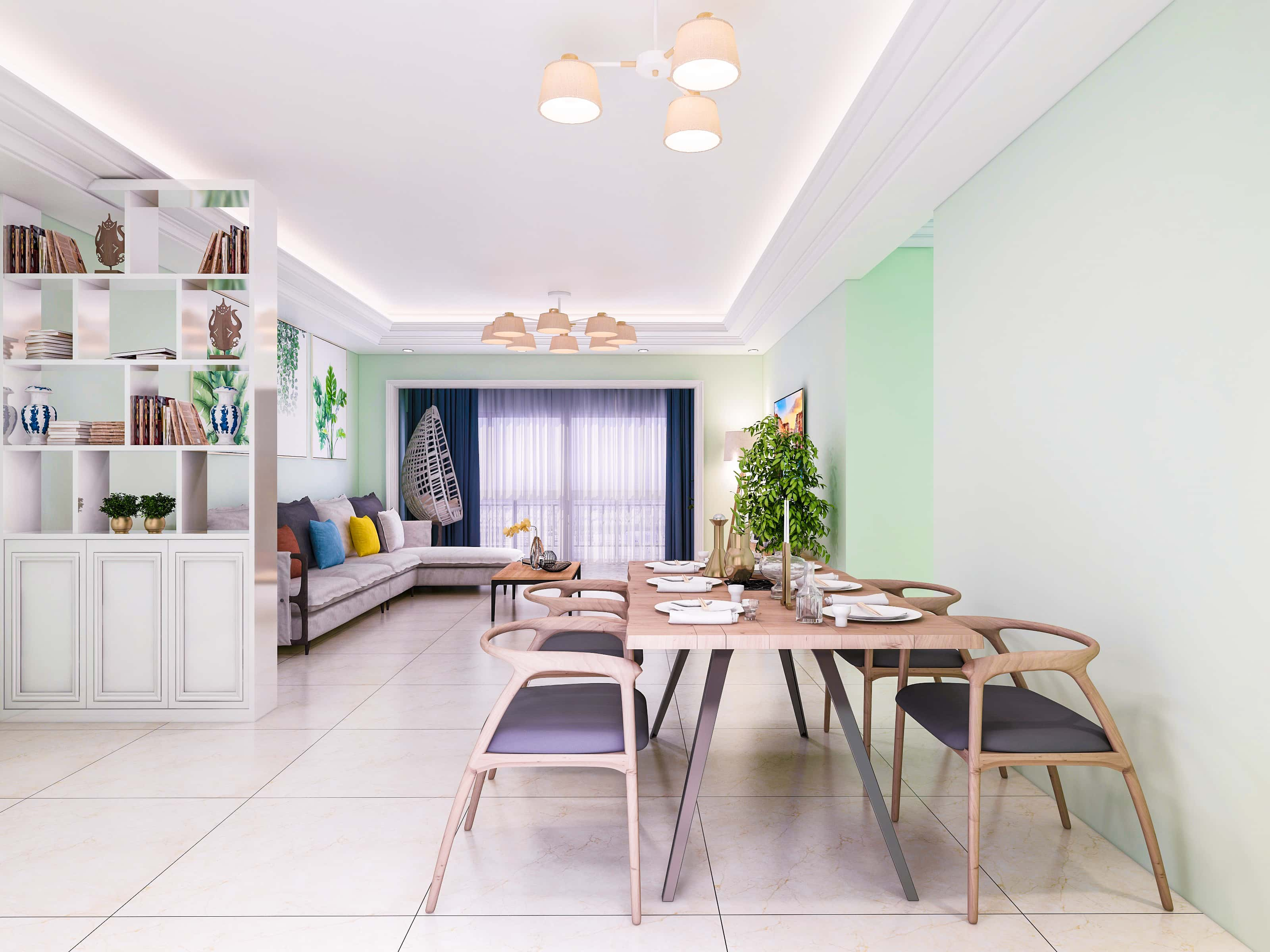
Floating Ceiling
The ceiling can also be put to good use to cordon off spaces visually and distinguish the dining area from the rest of the home. Note how this floating ceiling cleverly outlines the dining space below, while the thick pile rug on the floor acts as a footprint of the ceiling.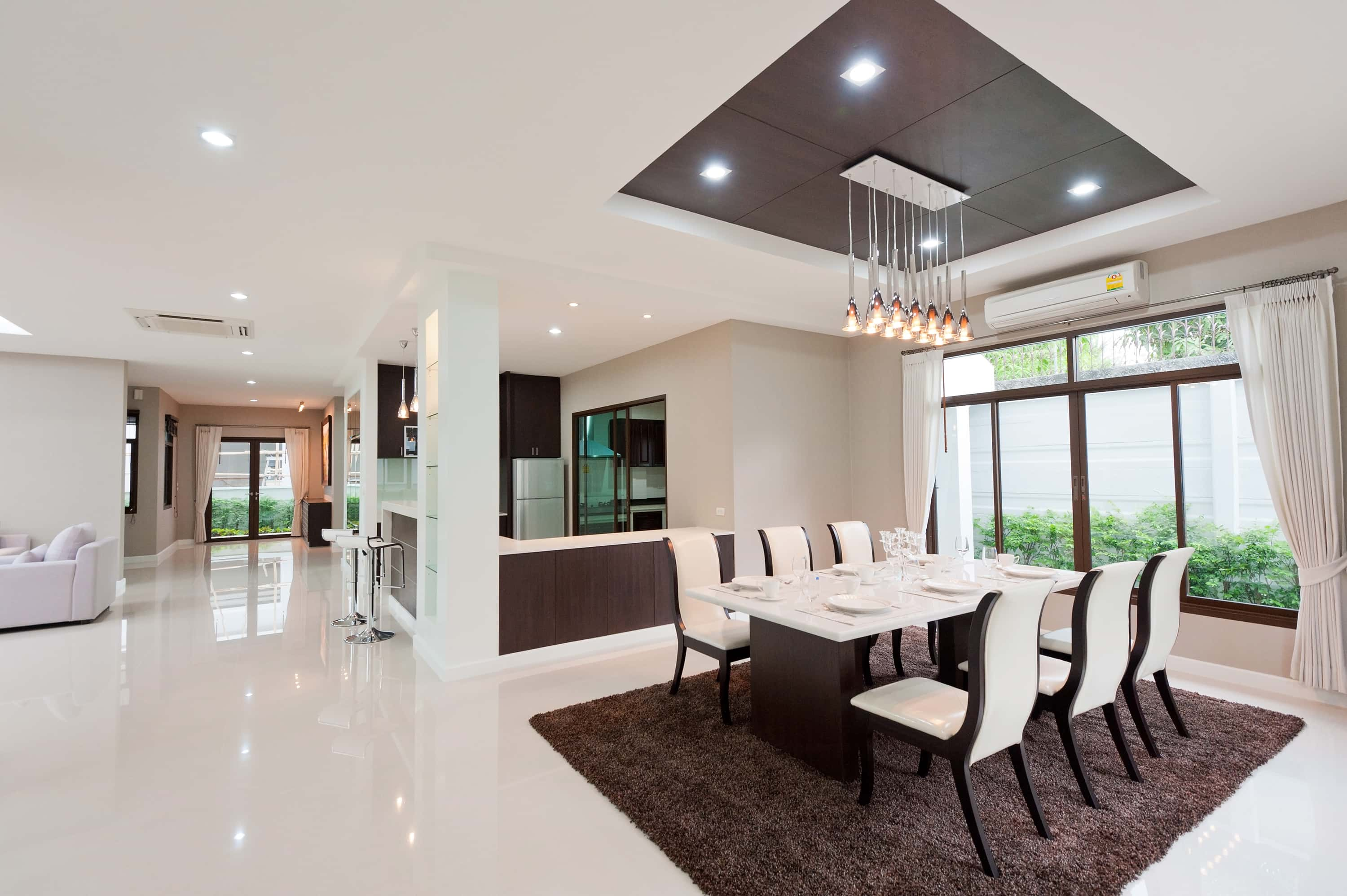
When you are designing the interior for an open-plan space, try to give equal importance and clear definition to each space, without eclipsing the other. Maintain the visual connection between spaces and do not sacrifice character or function while you are at it. Remember, carefully placed artwork and creative lighting can add the right warmth and character to your interior. And if you need any help with your home décor, you only have to call and the Homelane team will connect with you right away!

